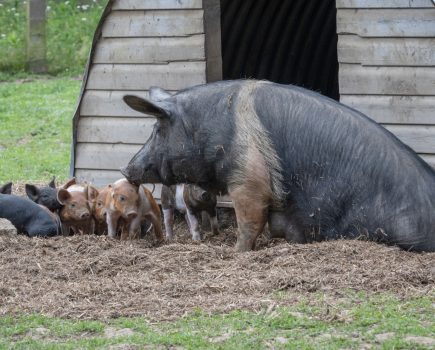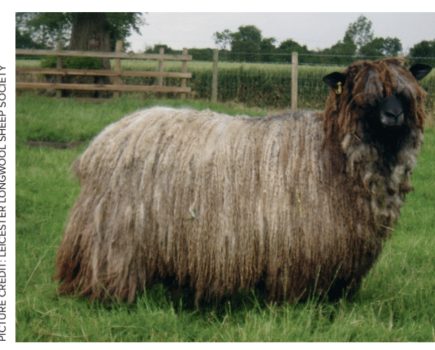Debbie Kingsley meets some of the entrepreneurial pioneers developing high value livestock in Britain
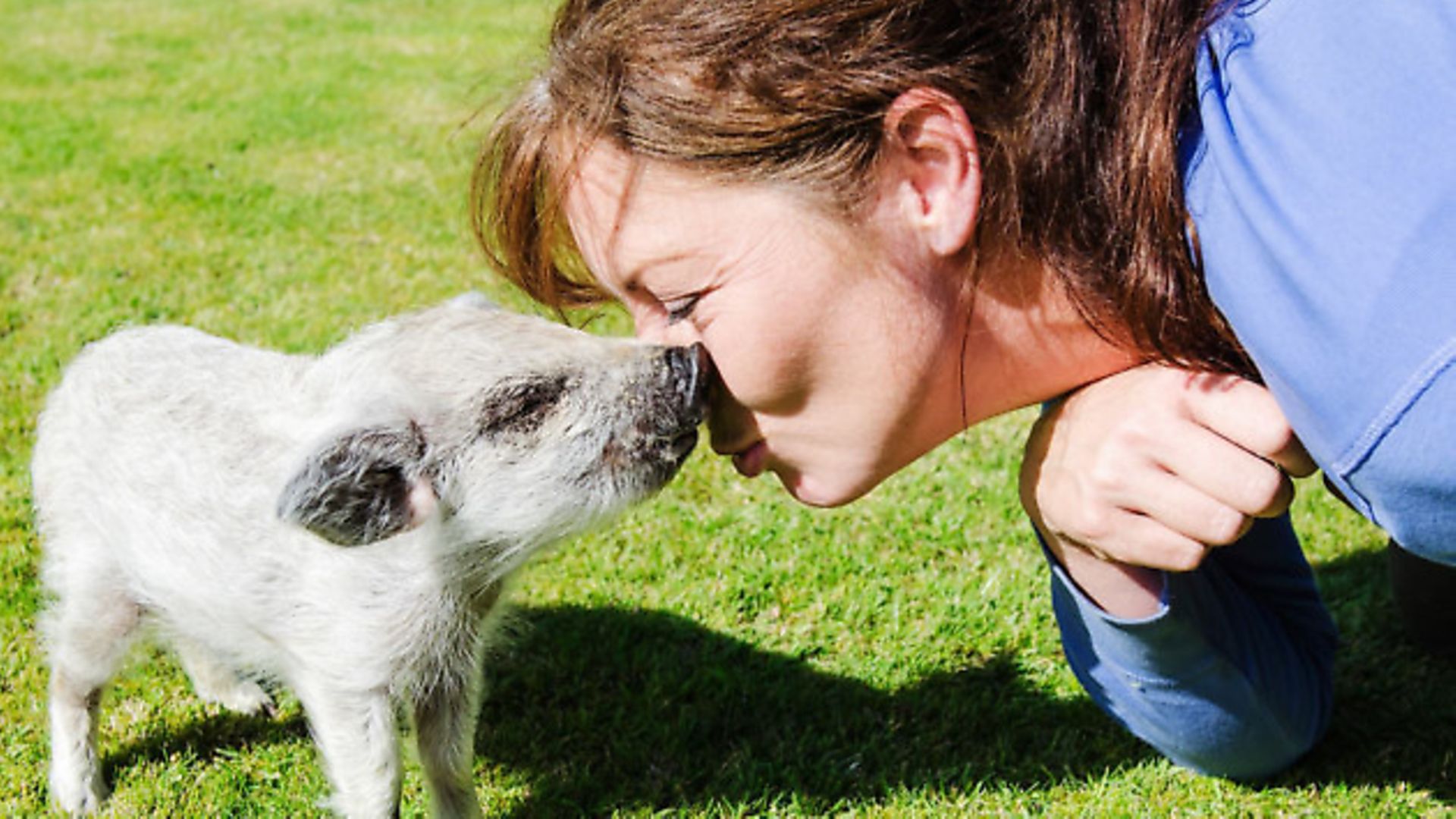
When we started smallholding, more than 25 years ago, the high value niche market of the moment was llamas and alpacas. Llamas were mostly being sold as guard animals for sheep keepers and alpacas for budding fibre businesses or as pretty grazing talking points for country homes, and you had to travel long distances to the few breeders that had stock for sale. I remember breeding alpaca females of quality going for upwards of £7,000 even then. Now, we see llamas returning home with their owners from the local livestock auction, unsold, not having reached a small reserve of £75. That’s not to say that camelids aren’t potentially of high economic value still, and the very best breeding stock are fetching £15,000 or more, although entire males can now be purchased for £400.
We’ve all seen and gasped at the prices being paid for the very best rams and bulls (£152,000 for a Texel ram in August 2014 and £126,000 for a Limousin bull in 2012). But it’s not just large scale farmers dealing in high value animals and importing rare stock – some smallholders are clearly being very entrepreneurial in adding value to their activities, turning their hobbies and passions into viable high value businesses.
But what are the current livestock choices of these pioneering entrepreneurs? I spoke to a number of inspiring, go-getting, market–shaping livestock keepers who are investing considerable time, energy, imagination and money into developing new markets. All of these people are in the early stages of development, but are beginning to see sales build, and demand grow. They are the models that others are benchmarking, and we can only hope that their followers will show as much integrity when the market builds and prices inevitably mellow.
Lisa Hodgson, Otterburn
Mangalitzas, York
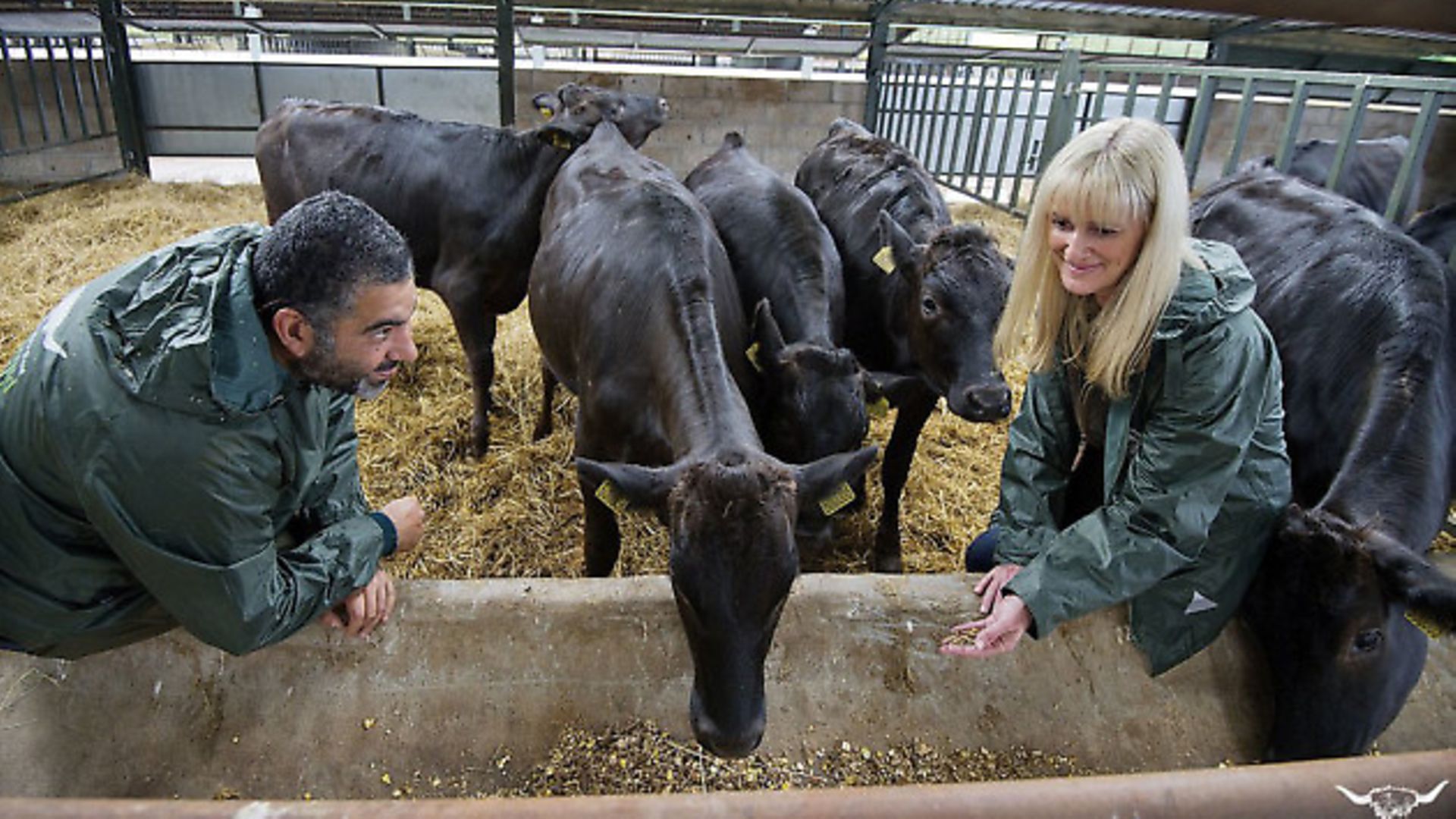
One entirely inspiring entrepreneur is Lisa Hodgson, of Otterburn Mangalitzas. On 24 acres and in three beautiful barns rented from Duncomb Park Estates, Lisa and her partner Tim have 22 pedigree Mangalitza breeding sows and three boars, and when I spoke to her they had a total of 224 pigs on the premises, although no doubt that changes from day to day. It’s the largest Mangalitza herd in the country, and was started in 2012 after a visit to the Beamish Museum and love at first sight of the woolly pigs. Lisa and Tim bought the best available pedigree stock from across the UK, limited as they were by strong export restrictions from Hungary where the breed originates, although things are easing up now, and they are looking at importing new bloodlines.
But Lisa isn’t following the trend of creating a high value livestock business and then selling the desirable offspring to keen smallholders. Instead, Otterburn Mangalitzas are steadfastly and patiently building a business based on the extraordinary meat and fat derived from the Mangalitza. Unlike the rare breed pig choices of most smallholders, who take their weaners to 6-8 months before going for meat, the Mangalitza needs a seriously long growing period and shouldn’t be slaughtered until 18 to 30 months, much more like cattle than pigs. Weaned at 8 to 10 weeks, the litters are kept in spacious barns until they are large enough not to escape through stock fencing and then reared outside, the best kept as future breeders, the others growing on to develop their extraordinary flavour potential. The gilts go to the boar much later than the usual nine months too, at 15-18 months. The desirable marbling and flavour of the meat develops from 18 months onwards, so this is not the breed of choice if you are after quick results. It is also a large pig, developed for the fat, so it really shouldn’t be treated like the native breeds smallholders more commonly know and love. Currently Lisa and Tim are building their market through top butchers and restaurants, selling whole carcasses to chefs with imagination, and inspired by the product, who don’t just want a box full of tenderloins. If you want to try some of the fat for yourself, you’ll find it beautifully packaged as the luxury item it is, from Lewis & Cooper online food hall http://www.lewisandcooper.co.uk/store at £4.99 for 300grams.
In time, Lisa and Tim aim to set up their own cutting room and website and sell their meat directly to the public. If you wanted to buy a Mangalitza sow to start off your own high value business, you’re looking at investing at least £1,000 for one. Be conscious, however, that the endearing woolly trait of the breed emerges in cross breeds, so that pretty curly coated weaner you’ve seen for sale at £50 certainly won’t be a pedigree Mangalitza. In America where the breed is also highly desirable, pedigree weaners are being sold for $1,500 each (£930), high value animals indeed.
Wagyu cattle: Pat
Whelan, Ireland
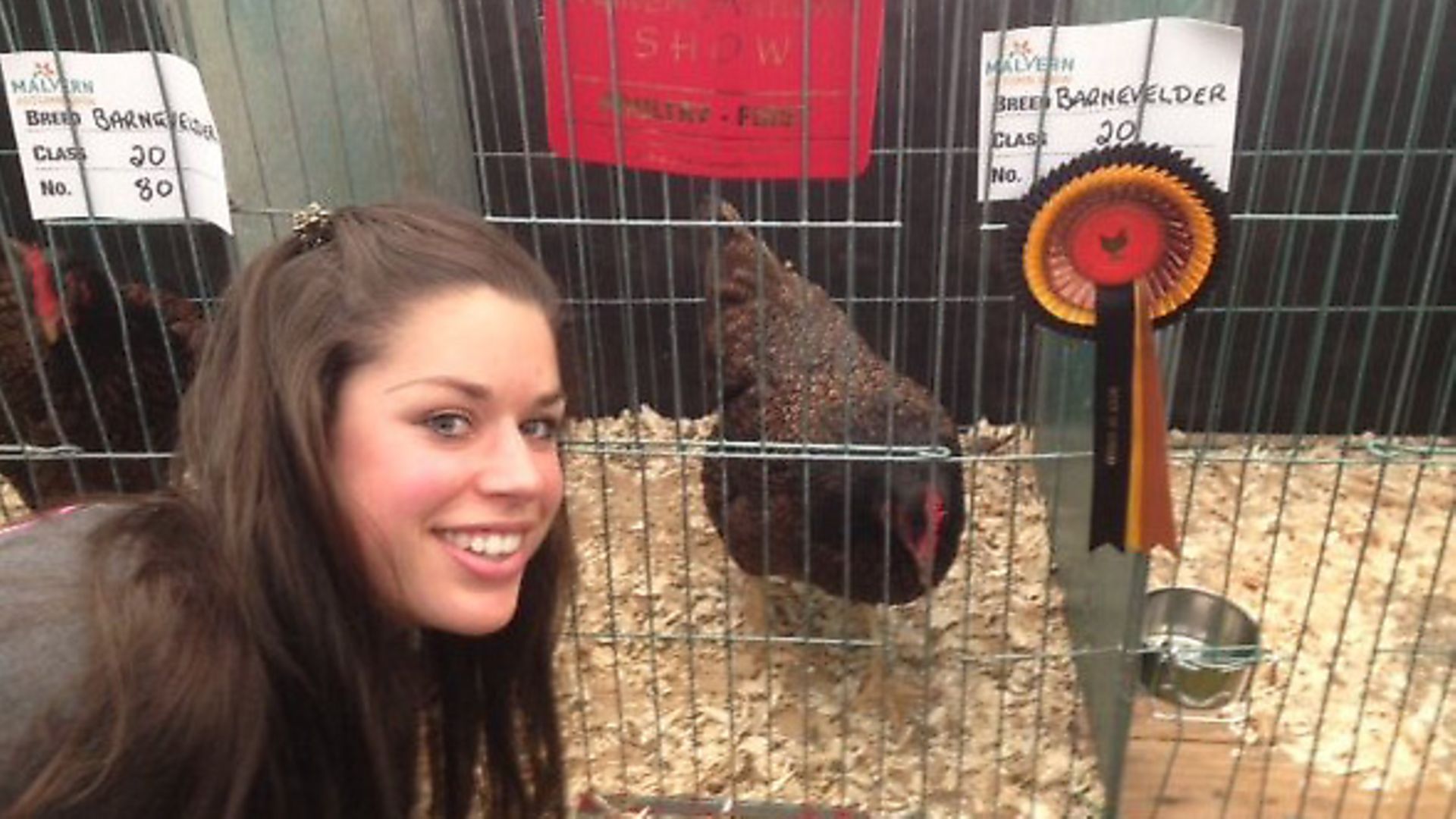
Pat Whelan is something of a legend in his own lifetime. A renowned butcher in Ireland, he is a passionate advocate for local, well produced, nutrient–rich food of the highest quality. As part of this passion, four years ago he started to build a small herd of Wagyu cattle. He came across the breed in Japan and it sparked an interest that involved the importing of fertilised embryos. He now has 15 purebred Wagyus and 30 half bred Wagyu/Aberdeen Angus crosses. His aim is to produce world class, great tasting meat for his customers, and the Wagyus are his pet project. His butcher shops are paeans to meat – he describes the undoubted beauty of the shops as ‘a reverential nod to nature, showing how privileged we are, we created a space to sell meat respectfully, an altar to meat’. Pat sells his Wagyu beef online: you’ll pay 55 euros per kilo for sirloin steaks (called striploin in Ireland), that’s £43 per kilo, and 65 euros per kilo for fillet steak (£51). He describes himself as a price-maker, having built and created his own supply chain. As a well established butcher (butchery and farming has been in the family for five generations), unlike Lisa and Tim he already has a fabulous outlet for his speciality meat. Pat’s concern is that “people don’t connect with food as an investment in their long term health and well being – they should consider this when they buy food, making more careful choices about what they eat”. He describes fat as “the most misunderstood food on the planet. In Japan they eat Wagyu that has a fat score of 9 – almost white – which wouldn’t appeal to the European, but the Japanese only eat this meat by the gram.”
Like Lisa and Tim, however, the Wagyu enterprise is still at the very early stages and Pat says he’s still working it all out. “We’ve killed at 21 months, and bulls at 16 months and now we geld everything. Every carcase is different, depending on gender, age, diet and genetics, and we are now trying slaughter at 29 months. For the best fat cover we take heifers to 21-22 months and around 600 kilos live weight. We have high meat yields but there is a heavy fat content which we sell as beef dripping.”
Other Wagyu breeders suggest the animals need to mature to 36 months before producing the best beef, and UK prices for beef are up to £100-£120 per kilo for prime cuts and £30 per kilo for burgers (as a comparison you’ll pay around £13.25 per kilo for organic Aberdeen Angus beef burgers and £35 for prime cuts).
Fancy fowl. Laura
Ranson, Rough Hill
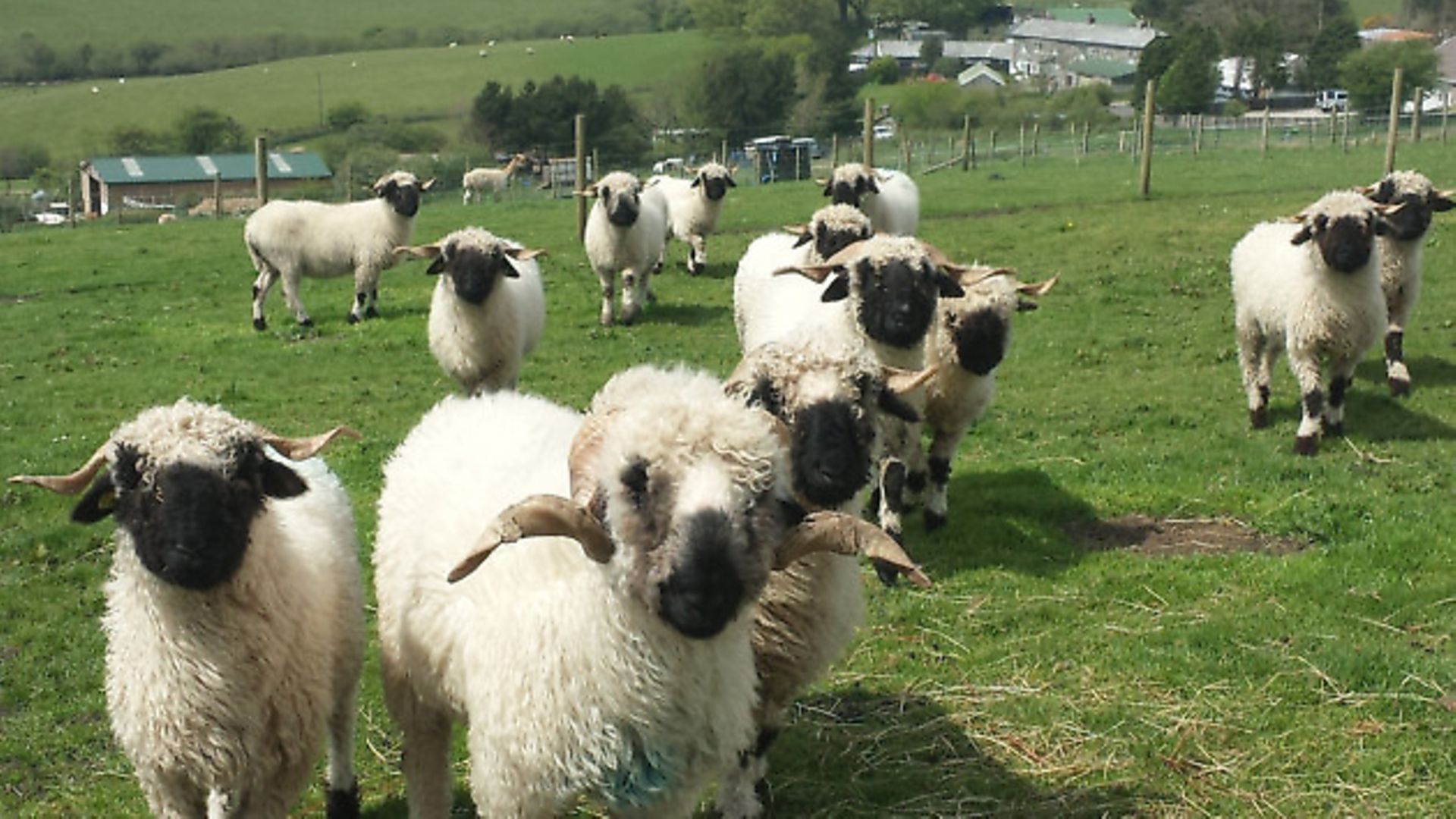
Poultry, Worcs
As for luxury priced poultry, it was only a few years ago when the Chocolate Orpington bantam emerged – a brand new colourway bred by Rob Boyd and colleagues. Hatching eggs were reaching extraordinary prices of more than £300 for six on eBay. Now, you can source them easily for around £10 for 6 eggs or £25 for a point of lay bird; as availability has rocketed the price has normalized in line with other breeds and the edge the initial breeders of this non-standard innovative bird had, has now evaporated. Currently it’s the incredible Ayam Cemani that is breaking poultry price records. I spoke to breeder Laura Ranson of Rough Hill Poultry who was attracted by their unusual, striking looks. They originate from Indonesia and are entirely black: skin, feathers, meat, comb, legs, organs and bones; they may look satanic but are lovely natured, docile and inquisitive birds. Pullets are being sold for up to £1,000, although £150 for a breeding pair is more likely, day old chicks for £30 and a single hatching egg is £10. When Laura was breeding them they were very rare in the UK, and her hatching eggs were selling from £50 to over £150 for six. The story of her partner mistakenly making a £150 omelette is not one she is unlikely to forget. Availability is quickly increasing however; a check on eBay shows seven UK sellers of Ayam Cemani hatching eggs ranging from £6.50 to £50 for six. But beware, these are not the easiest eggs to hatch even though fertility may be high. Birds can already be bought aged 6-10 weeks for £50 for a female, £30 for a male and demand no longer seems to be outstripping supply. Whether the cheaper birds match the quality of the more stupendously priced ones is for you to judge.
Swiss Valais Blacknose.
Emma Collison and Stuart
Billingshurt, Cornwall
Without a doubt, the new high value sheep on the UK block is the gorgeous Swiss Valais Blacknose. Since being profiled on BBC’s Countryfile in 2012, its huge visual appeal has created waves of admiration and covetousness by livestock keepers and those who just like to look and enjoy vicariously. The first to import the sheep were Cornwall based Emma Collison and her partner Stuart Billinghurst of Moor View Alpacas. Exhibiting exactly what it takes to be a natural entrepreneur, having researched that there were no Valais Blacknose sheep in the UK, Emma spent the year after the Countryfile programme talking to shepherds in Switzerland and Germany and early in 2014 visited the friends she’d made by phone and email who collected a flock of 25 ewes and two rams for her, sourced from nine Swiss flocks.
They have been swiftly followed by a farmer in Scotland who appeared in the national press for having paid £55,000 for ten ewes and a ram. At least one other person is in the throes of importing the sheep, paying £3,000 per ewe plus all the transport and vet costs. Currently, the very few sheep that are available for sale from within the UK are fetching £4,000 for a ewe, £9,000 for a ram and £1,000 for a wether. The ewes can produce two sets of lambs a year, which means the numbers are likely to increase rather more quickly than would normally be the case. The looks of the Valais Blacknose will probably make its fortune in the UK – it’s hard to imagine a more lovely looking sheep, with its stature, curly locks plus the charming colouring of the giant panda.
Building on their pioneer status, Emma and Stuart rented more land to supplement their own 10 acre plot and imported a further 125 Valais Blacknose sheep in October 2014, so they currently have the largest flock in the UK by some margin. I visited them on a very rainy day but that didn’t stop me enjoying these extraordinary sheep. They are very docile, and although both females and males are horned, they are gentle, inquisitive creatures. Having helped Emma turn up a mighty ram to check its feet, I can testify that they are indeed easy for smallholders to handle.
Emma is incredibly pragmatic about the enterprise – having seen the bottom fall out of the alpaca livestock market she is most imaginative in making the best use of her animals. They are one of a very small number of alpaca meat producers in the UK, and their sausages are delicious (even Nigel Slater thinks so). They make alpaca duvets and pillows, all sorts of knitwear from baby wear to blankets and socks and spinning and knitting kits. http://shop.moorviewalpacas.com/shop/, and are just starting to produce alpaca skins – a luxurious alternative to sheepskins – and alpaca pies, pasties and sausage rolls. This attitude continues with the sheep; they know that even though the interest in the Valais Blacknose may remain high, that the market for these unusual and high value animals is likely to be satisfied in the next five or ten years, and that prices will inevitably drop. Having said that, they sold all their freshly shorn fleeces in just 24 hours of them going on sale. But Emma and Stuart are not ones for doing things by halves: they are working with DEFRA to set up the British Valais Blacknose Sheep Society and set the breed standard in the UK, and with Libby Henson (sister of Adam Henson who is a huge fan of the breed and first brought them to our attention on Countryfile) to develop the pedigree flockbook to ensure traceability of pedigree animals and bloodlines. Because they are so beautiful, I think the interest in the breed will be permanent and it’s good to know that such care is being taken to ensure pedigree stock of varied bloodlines is being developed in the UK.
SUMMARY
Lessons to be learned
These people are risk-takers, creating markets for the early adopters and then for the wider market interested in niche products. If it takes £1,800 just to transport two weaners to the UK from Eastern Europe, never mind the purchase price, vet fees and so on, it’s a costly process setting up a business where the market is an unknown quantity and will in any case take time to build. And if someone is paying £150 for six eggs, it’s entirely probable that the high price can mean equally high hassle if their incubator goes on the blink.
Of course you don’t have to keep the most expensive livestock in the country to make a living from your smallholding, and there are plenty of ways to be entrepreneurial. But there are lessons to be learned from these case studies: you need to do what you do really well; you need to be one of the few doing it, or the best of the many; you probably need to create trends rather than follow them, and imagination, passion, a talent for advocacy and marketing are traits you can’t do without. It’s certainly made me think. Perhaps an ideal high value smallholder venture would be to train pigs as expert truffle hunters. Truffles sell from £1 to £3 per gram; breeding and training truffling pigs could be most lucrative, and rather fun.
Contacts:
? Lisa Hodgson of Otterburn Mangalitzas https://www.facebook.com/otterburn.mangalitza and @OtterburnMangas
? Pat Whelan http://www.jameswhelanbutchers.com/ and @Pat_Whelan
? Martine Chapman of Highland Wagyus http://wagyu.co.uk/ and @ChapmanMartine
? Emma Collison and her Blacknose Valais sheep of Moor View Alpacas http://www.blacknosesheep.com/ and @MoorViewAlpacas
? Laura Ranson of Rough Hill Poultry http://roughhillpoultry.co.uk/
Image(s) provided by:
Archant
Archant
Archant
Archant




